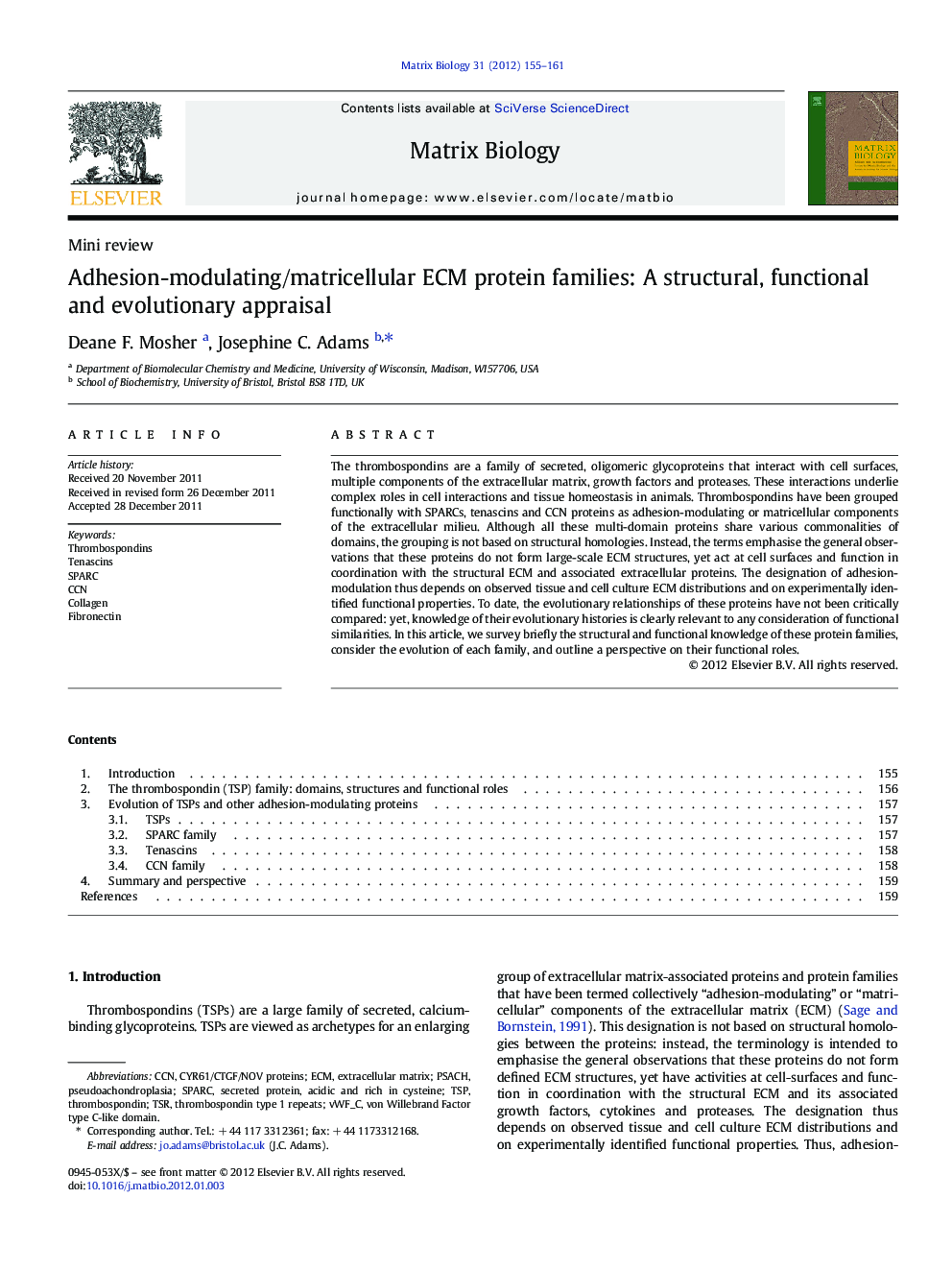| Article ID | Journal | Published Year | Pages | File Type |
|---|---|---|---|---|
| 2144860 | Matrix Biology | 2012 | 7 Pages |
The thrombospondins are a family of secreted, oligomeric glycoproteins that interact with cell surfaces, multiple components of the extracellular matrix, growth factors and proteases. These interactions underlie complex roles in cell interactions and tissue homeostasis in animals. Thrombospondins have been grouped functionally with SPARCs, tenascins and CCN proteins as adhesion-modulating or matricellular components of the extracellular milieu. Although all these multi-domain proteins share various commonalities of domains, the grouping is not based on structural homologies. Instead, the terms emphasise the general observations that these proteins do not form large-scale ECM structures, yet act at cell surfaces and function in coordination with the structural ECM and associated extracellular proteins. The designation of adhesion-modulation thus depends on observed tissue and cell culture ECM distributions and on experimentally identified functional properties. To date, the evolutionary relationships of these proteins have not been critically compared: yet, knowledge of their evolutionary histories is clearly relevant to any consideration of functional similarities. In this article, we survey briefly the structural and functional knowledge of these protein families, consider the evolution of each family, and outline a perspective on their functional roles.
